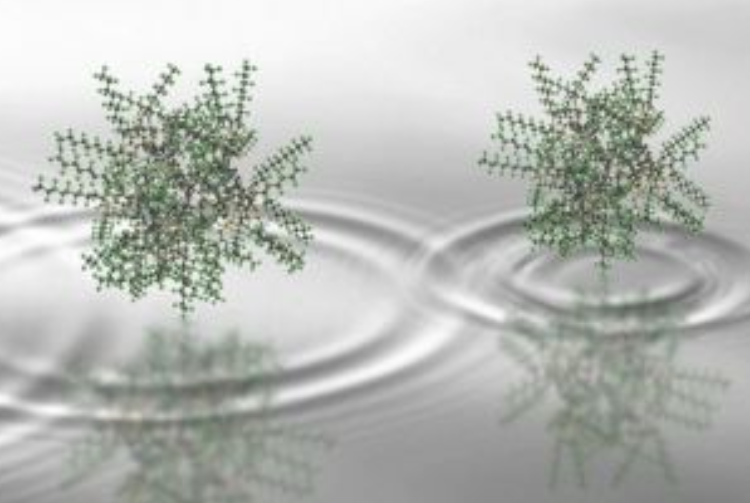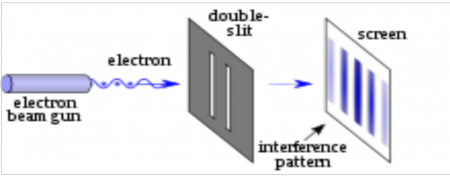2000 Atoms in 2 Positions at Once: Quantum Superposition Showed in Unprecedented Large Scale

Image courtesy: Phys.org.
The quantum world is imagined to appropriately exist in the microscopic scale, precisely at the level of electrons, protons or the photons. The founding principles of quantum mechanics like that of quantum superposition or the quantum entanglement etc. are established in the last one century to be realities. But, showing the existence of the quantum principles at a large scale has still been a hot issue. While one school of thought perceives that quantum principles might not be a reality when it comes to large-scale objects, the others have tried to decipher whether quantum behavior could be achieved at all at a scale that goes beyond the classical microscopic dimensions.
Now, a University of Vienna team has claimed to have shown quantum behavior at a scale, large enough, that has never been the case. Their work published in Nature Physics showed that hot and complex molecules composed of nearly 2,000 atoms were able to be brought into quantum superposition and made to interfere. Their work confirms what Richard Feynmann said—on a new mass scale, improved constraints on alternative theories to quantum mechanics have been placed.
What is Quantum Superposition?
To simplify quantum superposition, one of the hallmarks of quantum mechanics, let’s imagine a pond where two waves are produced. This can be done by constantly disturbing the surface water with two sources, say hitting the surface water with two sticks. What we can see is that the two waves emanating from the two sticks, by disturbing the surface water, interfere at some point and as a result, we see a pattern emerging that doesn’t match either of the single waves. A physicist explains it by saying that waves can occupy multiple places at once. The merging of the two waves could be imagined as the superposition in a simplified manner.
Now at a microscopic level, precisely, at the level of the electrons, this superposition phenomenon is well established. Electrons, apart from being particles, are also waves—the heart of the wave-particle duality principle. So electrons can also have a superposition stage. Apart from electrons, protons are also been shown to have the superposition ability.
The most elegant example in this regard, perhaps, is the famous double slit experiment carried out by Thomas Young in 1920s. The double slit experiment also established the dual character of light—that is light having both particle and wave characters. When beam of light was allowed to pass through two tiny slits, the light beams form an interference pattern. Had light been only particles, the beams would have formed only two tiny spots on the screen. The interference property is essentially is that of a wave.

The Double Slit Experiment. Image: Wikipedia.
The New Experiment at a Massive Scale
Markus Arndt and his team at the University of Vienna took molecules that have masses greater than 25,000 atomic mass unit, which is really massive in comparison to the previously known records. They used an interferometer called the C707H260F908N16S53Zn4 and one of their largest molecules was made to pass through it. This kind of a molecule has more than 40,0000 protons, neutrons and electrons with the de Broglie wavelength that is thousand times smaller than the diameter of even a single hydrogen atom. Larger a molecule is, smaller the wave length it has.
The teams experiment resembled the double slit experimental setup, specially designed for large molecules. Their machine could fire a beam of the large molecules through a series of grates and sheets having multiple slits. The beam was about two metre long. The Nature paper mentioned that the team had to consider factors like gravity and rotation of earth in handling such a large beam of big molecules. They also kept the molecules at an elevated temperature, a temperature fairly high for a quantum physics experiment.
With all these attributes incorporated in their experimental setup, when they switched it on, they saw that their detectors at the end of the beam revealed an interference pattern similar to that of the double-slit experiment. This is incredible. Quantum superposition at such a massive scale is really incredible.
“The next generation of matter-wave experiments will push the mass by an order of magnitude,” the authors commented.
Get the latest reports & analysis with people's perspective on Protests, movements & deep analytical videos, discussions of the current affairs in your Telegram app. Subscribe to NewsClick's Telegram channel & get Real-Time updates on stories, as they get published on our website.














